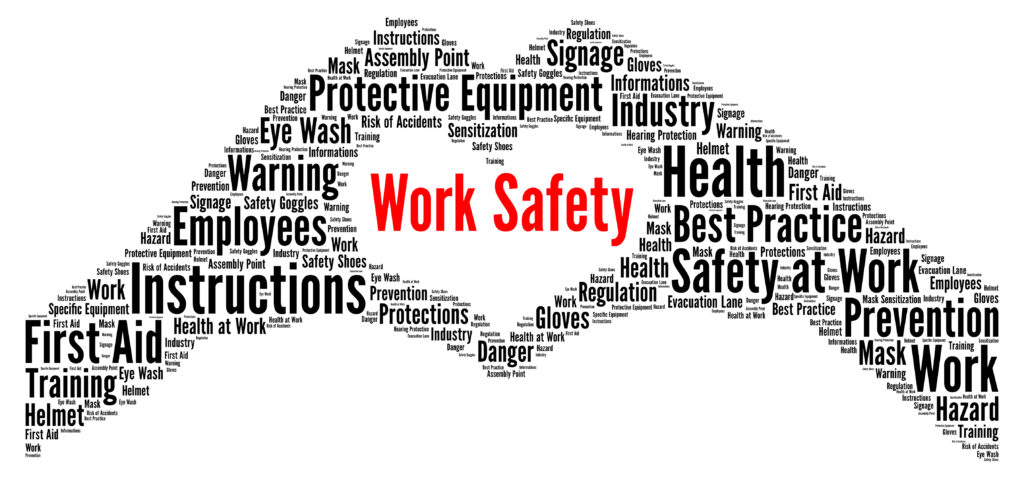 Supporting employees who are caregivers of all types isn’t just a compassionate thing to do, it’s a strategic business decision. This is especially true considering that about 6 million people in the U.S. provide care to loved ones with cancer, a type of caregiving that requires significant mental and physical resources and can, if not addressed, cost employers thousands of dollars per employee annually.
Supporting employees who are caregivers of all types isn’t just a compassionate thing to do, it’s a strategic business decision. This is especially true considering that about 6 million people in the U.S. provide care to loved ones with cancer, a type of caregiving that requires significant mental and physical resources and can, if not addressed, cost employers thousands of dollars per employee annually.
As more employees step into caregiving roles, reassessing benefit plans and policies to ensure they provide support is mutually beneficial. In addition to helping caregivers fulfill work duties, creating supportive environments increases productivity and efficiency, and reduces turnover.
An essential first step to supporting these employees is understanding them. Many caregivers juggle a variety of responsibilities — from helping loved ones with daily activities to attending medical appointments, organizing finances, and providing emotional support. Approximately half of this group accomplishes these responsibilities while working, which means most (if not all) businesses will be affected. And while 63% of employers believe they provide adequate support for employees who are caregivers, 44% of those employees say benefits meet their needs.
Addressing the Gap
While there are an increasing number of resources for caregivers, those who support loved ones with cancer embark on an extremely demanding path that requires significant psychological resources, effort, and time. In fact, these responsibilities can consume an average of 32.9 hours per week.
The dual role of caregiver and employee can lead to problems at work as stresses of work and home life overlap. Common issues include mental health strain and productivity problems such as absenteeism and presenteeism, a phenomenon where employees are physically present but working at reduced efficiency. In fact, 48% of cancer caregivers say they have arrived late at work, left early, or taken time off for caregiving duties. These duties can reduce work productivity by one-third and cost businesses an estimated $5,600 per employee annually.
To address this issue, a leading multinational financial services company with more than 10,000 employees reassessed its approach. Once leaders recognized that their employees with caregiving responsibilities were experiencing significant stress, anxiety, and burnout that led to decreased productivity, leaders invested in more formal policies and resources to help with decision- making, planning, and support.
while 63% of employers believe they provide adequate support for employees who are caregivers, 44% of those employees say benefits meet their needs.
Strategies for Success
The first question they considered was how they could build a more supportive culture that anticipated some of the more common caregivers’ needs. Their approach:
- Encourage open dialogue between employees and managers: It is helpful to have a common understanding of what caregiving responsibilities involve and what can be done to help manage the workload together. These conversations encourage employees to discuss challenges without fear of stigma or retribution.
- Provide managerial training: A 2024 survey found that 74% of caregivers supporting loved ones with cancer could be better supported in the office if supervisors knew how to manage them.
The financial services organization introduced a training program for managers on this topic. The training was delivered through webinars to help managers understand caregivers’ needs and how to negotiate work arrangements and accommodations that support employees and meet production needs.
Best Practices
Given that caregivers often have to be physically present with loved ones to support them through medical appointments or home duties, it’s not surprising that 84% of employees who use flexible work arrangements say these arrangements are helpful.
Employers should consider accommodations that help caregivers stay at work, including hybrid/remote working, adjusted hours, reduced hours, and job-sharing arrangements. Flexible start and finish times may also allow employees to adjust their hours to accommodate caregiving responsibilities. Remote work options may also reduce the stress of commuting and allow working on the go (for example, at the hospital). Additionally, company-sponsored expanded leave policies — paid and unpaid — ensure job protection during extended absences, which gives employees the flexibility they need without fear of losing their positions.
Establishing comprehensive, flexible work and leave policies helps keep employees and managers on the same page about what is expected from all parties.
In addition to company-sponsored benefits, employers must be clear about legal obligations, which include:
- Family and Medical Leave Act (FMLA): Eligible employees are allowed up to 12 weeks of unpaid, job-protected leave per year to care for a seriously ill family member.
- Americans with Disabilities Act (ADA) – Association Provision: Employees are protected from discrimination due to their association with a person with a disability (for example, employees can’t be fired or denied promotion because they care for a spouse with cancer).
- State-specific family leave laws: Some states provide paid family leave (PFL) and/or expanded FMLA-type protections. For example, California, New York, New Jersey, and Washington have mandatory PFL benefits, while Texas and Florida have voluntary systems.
Supporting Caregivers’ Mental Health and Well-Being
As cancer caregivers juggle demands of work, family, and care for their loved ones, 69.2% describe their role as moderate to very stressful. When left unchecked, this stress can lead to more emotional and mental health issues, including depression, anxiety, burnout, and isolation, which can affect productivity as they struggle to concentrate or stay motivated.
Coaching programs for caregivers can help employees develop resilience through emotional, social, and practical support, and include:
Personalized one-on-one coaching (call, text, or email) on topics like balancing work and caregiving responsibilities, looking after your mental health, and talking to managers about caregiving needs.
Curated online resources that address the needs of caregivers who support loved ones with cancer.
Data shows that 70% of employees who participate in these types of resources report reduced stress and improved ability to manage work-life balance.16 There was also a 40% decrease in absenteeism, and 80% felt more supported by their employers.
While most employers want to support employees who are caregivers, knowing what that looks like can be difficult. The best place to start is talking with employees about work arrangements so you can identify gaps in the organization’s support plan. Consider the resources provided in this article to facilitate more internal discussion about how to support all employees in your organization.
References
- Journal of Clinical Oncology. 2023. Working, Low Income, and Cancer Caregiving: Financial and Mental Health Impacts. Retrieved from https://doi.org/10.1200/JCO.22.02537
- National Library of Medicine. 2022. Balancing Work and Cancer Care: Challenges Faced by Employed Informal Caregivers. Retrieved from https://pubmed.ncbi.nlm.nih.gov/36077682/
- J Cancer Education. 2021. Cancer Caregiving While Employed: Caregiving Roles, Employment Adjustments, Employer Assistance, and Preferences for Support. Retrieved from https://doi.org/10.1007/s13187-019-01674-4
- Standing Up and Stepping In: A modern look at caregivers in the U.S. Guardian Life. Feb. 11, 2025. Retrieved from https://www.guardianlife.com/reports/caregiving-in-america
- Cancer Caregiving in the U.S. National Alliance for Caregiving. June 2016. Retrieved from https://www.caregiving.org/wp-content/uploads/2020/05/CancerCaregivingReport_FINAL_June-17-2016.pdf
- J Canc Educ. 2021. Cancer Caregiving While Employed: Caregiving Roles, Employment Adjustments, Employer Assistance, and Preferences for Support. Retrieved from https://doi.org/10.1007/s13187-019-01674-4
- Value Health. May 2023. Caregiving-Related Work Productivity Loss Among Employed Family and Other Unpaid Caregivers of Older Adults. 10.1016/j.jval.2022.06.014. Epub 2022 Aug 13. PMID: 35973924; PMCID: PMC9922792.
- Workplace support crucial for cancer patients and caregivers, study finds. November 2024. Retrieved from https://www.benefitspro.com/2024/11/27/workplace-support-crucial-for-cancer-patients-and-caregivers-study-finds/?slreturn=20250317105852
- Cobbe, T., Mumford, D., Mantooth, J., Van Gaal, C., Balint, A., Wrobel, M., Raimondi, A., & Keenan, T. May 2024. Working while caregiving: It’s complicated. Retrieved from https://www.spglobal.com/en/research-insights/special-reports/working-while-caregiving
- Family and Medical Leave Act. Department of Labor, Wage and Hour Department. Feb. 11, 2025. Retrieved from https://www.dol.gov/agencies/whd/fmla
- Questions & Answers: Association Provision of the ADA. U.S. Equal Employment Opportunity Commission. Feb. 11, 2025. Retrieved from https://www.eeoc.gov/laws/guidance/questions-answers-association-provision-ada
- State Paid Family Leave Laws Across the U.S. Bipartisan Policy Center. Feb. 20, 2025. Retrieved from https://bipartisanpolicy.org/explainer/state-paid-family-leave-laws-across-the-u-s/
- State Paid Family Leave Laws Across the U.S. Bipartisan Policy Center. Feb. 20, 2025. Retrieved from https://bipartisanpolicy.org/explainer/state-paid-family-leave-laws-across-the-u-s/
- Longacre ML, Ross EA, Fang CY. Caregiving Choice and Emotional Stress Among Cancer Caregivers. West J Nurs Res. 2014 Jul;36(6):806-24. doi: 10.1177/0193945913510211. Epub 2013 Nov 11. PMID: 24221954; PMCID: PMC4148462.
- Xiang, E., Guzman, P., Mims, M. & Badr, H. (2022). Balancing Work and Cancer Care: Challenges Faced by Employed Informal Caregivers. National Library of Medicine, 14(17):4146. https://pubmed.ncbi.nlm.nih.gov/36077682/
- Empowering Caregivers in the Workplace: How a Global Financial Firm Transformed Employee Well-Being with Osara Health 2024. https://osarahealth.com/wp-content/uploads/2025/03/caregiver-empowerment-in-the-workplace.pdf











